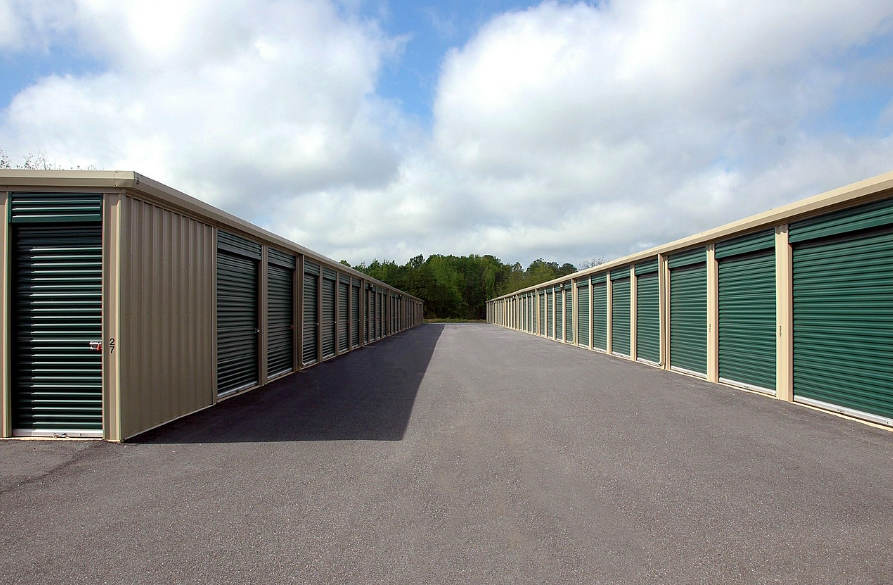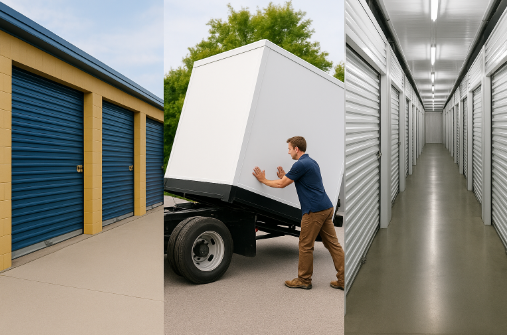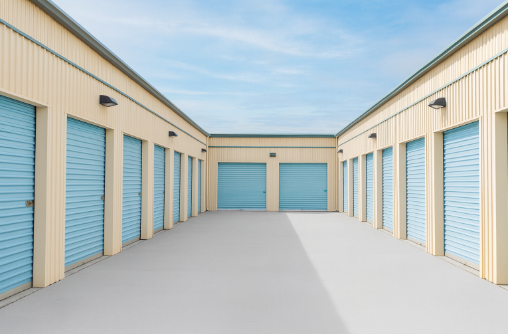Walk down the high street today and chances are you’ll pass a self-storage facility.
In fact, there are now more storage sites in the UK than there are McDonald’s restaurants. And demand is still climbing.
From e-commerce sellers needing somewhere to stash their stock, to families squeezed by smaller homes, to side-hustlers running businesses out of boxes, self-storage has quietly become one of the UK’s most resilient growth industries.
If you’ve ever thought about starting your own self-storage business, now might just be the right time.
So what does it take to get started and is it really as profitable as people say?
Why self-storage is booming

There are a few big reasons why self-storage demand is on the up.
Homes are shrinking: New-build houses are smaller, fewer have garages, and many lofts are converted into extra bedrooms rather than storage. That leaves people with less space for their belongings.
The e-commerce boom: Lockdowns accelerated the rise of small businesses selling through eBay, Etsy, Amazon and Facebook Marketplace. Those sellers need somewhere safe and affordable to keep stock.
Business use: Rising office rents mean some companies now use storage facilities instead of leasing extra office space. It’s cheaper and more flexible.
Resilience: The industry has weathered both recessions and the pandemic. In fact, some operators saw their best growth during COVID as people moved, downsized, or reconfigured their homes.
Financially, the sector has momentum. UK self-storage revenues passed £1bn for the first time in 2023, and yet the UK still has just 0.73 square feet of storage per person. Compare that with 9.44 sq ft in the US and 1.89 sq ft in Australia, and you can see the headroom for growth.
Why it’s an attractive business
Self-storage is often seen as one of the more stress-free business models. Unlike running a restaurant or a retail shop, you don’t need to worry about constant day-to-day demand.
Customers rent units (or space) on a recurring basis, which creates predictable, subscription-like income. Profit margins are strong too. Industry estimates put the average return on investment at 8–12% annually.
Facilities usually break even once they hit 50–70% occupancy, and a well-run site can maintain 85–95% occupancy rates. And it’s not just rental income.
Many operators add extra revenue streams such as selling packaging materials, insurance for stored items, van hire or man-and-van services, and specialist storage for things like boats or business stock.
The different types of self-storage business

Not all storage facilities look the same. There are four main models to consider, each with its own pros and cons.
Shipping container storage
Large metal containers, often 160 sq ft in size, placed in secure compounds. They’re relatively cheap to set up, flexible for customers, and allow people to drive right up to unload.
Some companies even deliver containers to customers’ homes.
Warehouse storage
The most common model in the UK. Think of a large building divided into hundreds of individual units, often with 24/7 access, climate control and strong security. Customers like the convenience, but the setup costs are higher.
Lock-up garage storage
Typically, purpose-built garages in residential areas. They’re smaller (around 124 sq ft), cheaper to run and rent out, but less flexible and sometimes less secure than other options.
Storage by the box
A newer, logistics-driven model. Instead of renting an entire unit, customers pay for storage per box. The company collects boxes from a customer’s home, stores them, and delivers them back on request.
Prices often start at under £4 per month per box, making it a cost-effective and highly convenient option, especially in cities or for students and renters who don’t need a whole unit. It’s a more operationally complex business but one that’s growing fast.
What to think about before diving in
If you’re serious about launching a self-storage business, here are some of the biggest factors to weigh up:
Location: Most customers want to be within 20 minutes of their storage. Population density and passing traffic matter. A site in a busy area may bring in more walk-ins, while a business park might suit companies storing stock.
Competition: Research local pricing and occupancy rates. How many facilities are nearby? Where are the gaps?
Security: Customers pay for peace of mind. Options range from heavy-duty padlocks to CCTV monitor, alarms, access control and even keyless entry. The more secure the site, the more you can charge.
Customer mix: Will you focus on households, students, businesses, or a combination? Each has different needs.
Revenue diversification: Beyond rent, think about add-on services and products. These extras can significantly boost profits.
Getting started

The nuts and bolts of setting up look a lot like other businesses: Do your market research, check demand and competition in your area. Write a business plan, including revenue streams, costs, and growth projections.
This is important if you need funding. Secure funding, knowing that setup costs vary wildly. Large warehouse facilities can run into the millions, while container or garage-based models are much cheaper to start. Get licences and permits, from planning permission to occupancy certificates depending on your location.
Build your brand, with a professional identity and clear USP, which is essential in what’s becoming a crowded market.
Go digital, with a user-friendly website that allows online booking and payments. Many operators use dedicated self-storage software to manage operations.
Get insured, covering your property, liability, and ideally customers’ belongings too. Finally, market your business using signage, local partnerships with estate agents and movers, and digital advertising.
Costs and profitability
Self-storage isn’t a business you can usually start on a shoestring. A modern warehouse facility can cost upwards of £3m to build, while container or lock-up models are significantly cheaper. That said, the recurring revenue model and high occupancy rates mean facilities can become profitable relatively quickly. The sector is often described as “recession resilient” since people still need storage when downsizing, relocating, or running small businesses through tough times.
Should you buy or build?

Some entrepreneurs choose to buy existing facilities rather than start from scratch. This avoids the time and cost of building, but prices vary hugely, with a site in central London costing tens of millions while one in rural northern England might be under £1m.
Another option is franchising. Some self-storage brands now offer franchise models, providing training, marketing and operational support in exchange for fees.
The bigger picture
The self-storage boom isn’t without its critics. Some housing campaigners argue it reflects Britain’s housing crisis, with people paying to store belongings because their homes are too small.
But for entrepreneurs, it remains a growing, resilient, and highly profitable sector. With demand outpacing supply, and innovative models like storage-by-the-box shaking things up, the opportunities are significant.
The key to success is choosing the right location, building trust through security and service, and running your operation like the subscription business it really is.
I’m Laura Wilson, a passionate blogger and content creator with a deep interest in business, finance, and entrepreneurship. I’ve had the opportunity to write for several premium blogs, sharing insights & practical advice for individuals & small businesses. I’m the founder and publisher of ukbusinessmag.co.uk, where I focus on creating valuable, easy-to-understand content to help UK startups & SMEs grow.



